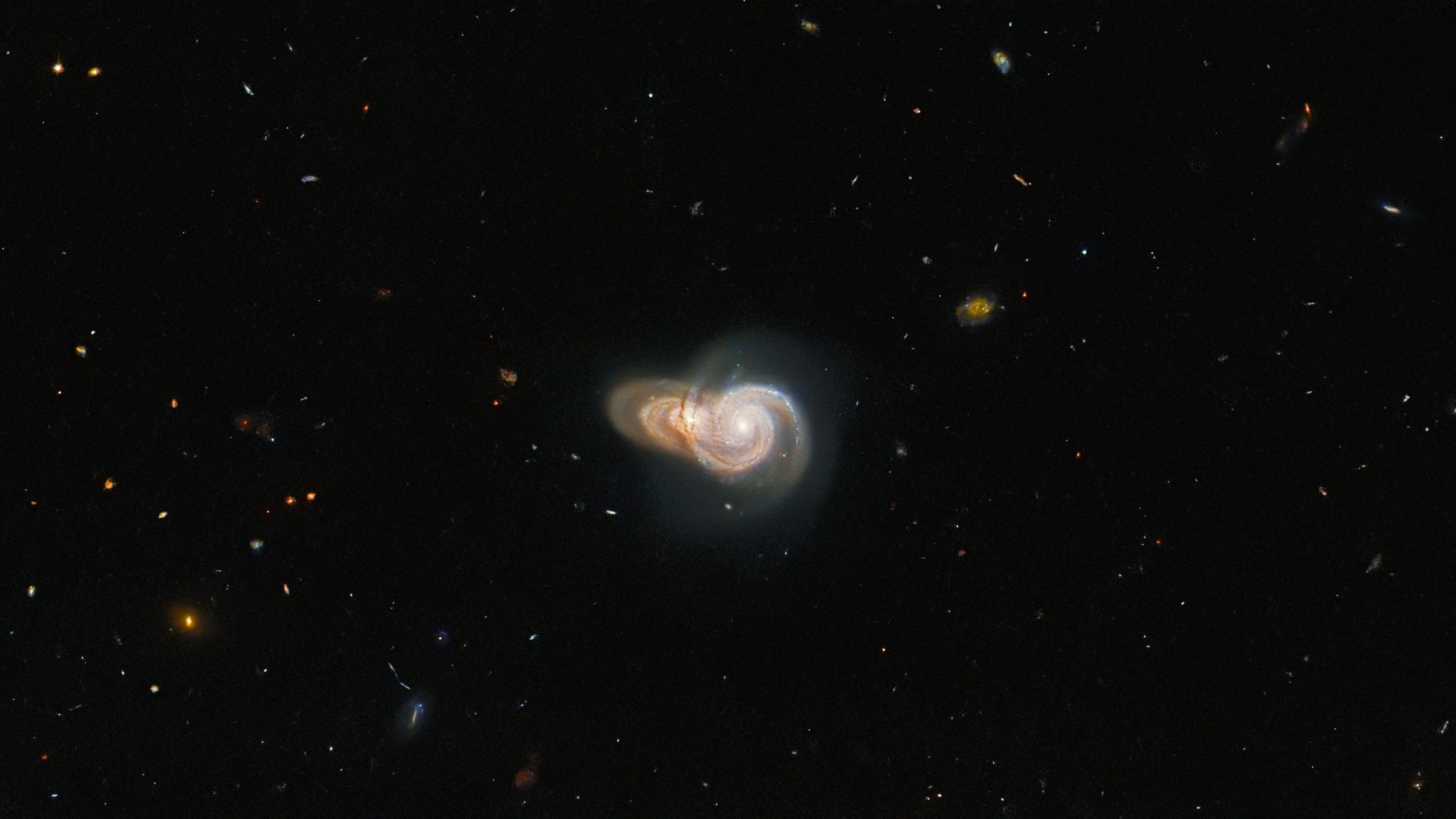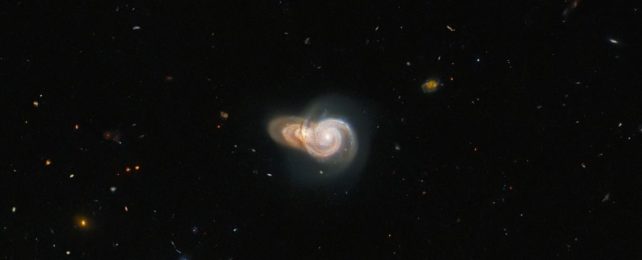A new image from the Hubble Space Telescope beautifully illustrates why astronomers need to be so careful about distance in space.
Over 1 billion light-years away, two galaxies float in the darkness, beautiful golden snail-like spirals seemingly caught in the act of colliding. They're named SDSS J115331 and LEDA 2073461, and in spite of appearances, they're not interacting at all.
Instead, they're separated by quite some distance. Their alignment is an absolutely beautiful line-of-sight coincidence.
Galaxies do collide in space, quite frequently, drawn together along dark matter superhighways to galaxy cluster nodes, where they stream towards a mutual galactic center.
This process is thought to be one way the supermassive black holes at their centers grow to masses billions of times that of the Sun: When galaxies merge, their central black holes do too.
But space is large, and there are a lot of things in it, so scientists must be careful when interpreting two objects that appear to be in the same place. Are they interacting, or are they overlapping with a vast distance in between?

Distance is one of the most important tools we have for interpreting the Universe around us. Many objects' size, mass, and brightness can't be accurately gauged without an accurate distance measurement.
But distances in space can also be tricky to gauge. You can't tell how far away something is just by looking at it unless you know how much light it emits.
That's why things like Type Ia supernovae, which have a known intrinsic brightness, are a useful tool for gauging distance in space.
For relatively close objects, we can use parallax – the way objects move across the sky in relation to each other.
However, beyond a certain distance, individual objects become harder and harder to see. So scientists rely on other tools, such as the way the expansion of the Universe stretches out light from distant objects.
That's how we know SDSS J115331 and LEDA 2073461 are not in the midst of a giant collision, although there are other clues, too: The two galaxies are far too neat; a collision would mess them up.
Even in the vicinity of the Milky Way, distances can be hard to gauge. Recently, scientists found that a source of gamma radiation was more distant than they had thought. In that case, the shared shape and alignment of the radiation and its source allowed scientists to make the connection.
Although overlapping galaxies may not help scientists better understand galactic collisions and mergers, they can be used to understand spiral galaxies.
When backlit by a more distant galaxy, the interstellar dust in a foreground galaxy can be easier to view. Scientists have used this quirk of alignment to map the distribution of interstellar dust in multiple galaxies.
It's unclear whether Hubble's image of SDSS J115331 and LEDA 2073461 will be used for this purpose. But it's incredibly pretty to look at.
You can download wallpaper-sized versions of this image from the Hubble website.
